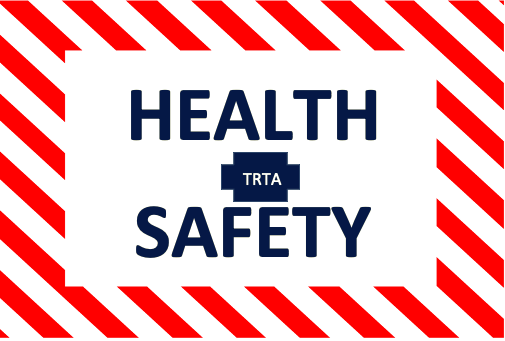Health and Safety Special Committee
2025-2026
State Health and Safety Committee Chair
Verna Mitchell
State Health and Safety Committee Members
Mary Ann Dolezal, Judy Hart, Debbie Prukop, Carol Rose
The TRTA Health and Safety Special Committee was created by President Marcy Cann and approved by the TRTA Executive Board for 2022-24. This committee will provide some of the information and resources previously promoted by the Healthy Living and Informative and Protective Services State Committees. It is an “opt-in” Committee at the district and local chapter levels.
Districts or local chapters can have a Health and Safety Chair, a Health Chair, a Safety Chair, or none.
The purpose of this special committee is to serve the entire membership of TRTA with health and safety information.
The goals of this committee are to provide monthly health and safety articles; and to promote health and safety programs and special events.
On the first Tuesday of the month, a health article will be posted on the TRTA website. On the third Tuesday of the month, a safety article will be posted on the TRTA website. These articles will include pertinent information for our members and will often include resources and online references. Once an article is replaced, it will become available under the appropriate menu tab. Please see the tabs below. This information is provided for all TRTA members.
Additional information will be provided, primarily for districts and local chapters, including newsletters, a monthly observances planning calendar, program ideas, and special events. Special events will include planning information for health and safety fairs, fitness walks, and other large-scale programs.
In addition to the committee members, advisors will serve in specific roles to assist the committee.

Districts or local chapters can have a Health and Safety Chair, a Health Chair, a Safety Chair, or none.
The purpose of this special committee is to serve the entire membership of TRTA with health and safety information.
The goals of this committee are to provide monthly health and safety articles; and to promote health and safety programs and special events.
On the first Tuesday of the month, a health article will be posted on the TRTA website. On the third Tuesday of the month, a safety article will be posted on the TRTA website. These articles will include pertinent information for our members and will often include resources and online references. Once an article is replaced, it will become available under the appropriate menu tab. Please see the tabs below. This information is provided for all TRTA members.
Additional information will be provided, primarily for districts and local chapters, including newsletters, a monthly observances planning calendar, program ideas, and special events. Special events will include planning information for health and safety fairs, fitness walks, and other large-scale programs.
In addition to the committee members, advisors will serve in specific roles to assist the committee.
Safety Articles
SPRING FORWARD WITH SAFETY
Spring Safety Checklist
Time To Change The Clocks
Usually, Daylight Savings Time begins every year on the second Sunday in
March. Hopefully, your body has adjusted to the time change. You’ve
lost an hour so, its important to maintain a consistent sleep schedule.
Smoke Alarms
Test your smoke alarms and change the batteries as necessary. Regularly
check your smoke alarms monthly. If, you need help contact your local
fire department.
Carbon Monoxide Detectors
Make sure that you have carbon monoxide detectors. Carbon Monoxide is a
silent killer.
Family Emergency Plan
The National Safety Council recommends that every family have an emergency
plan in the case of a natural disaster or catastrophic event. Visit FEMA website for a complete list of emergency items for your home and car.
You should have:
. A communication plan to outline how family members will contact each other,
when and where to meet.
. A shelter in place plan.
. A getaway plan that includes routes and destination.
Make sure that:
. Your first aid kits for home and car are updated.
. Keep a full tank of gas.
Spring Cleaning
. Carefully read the labels of all cleaning supplies.
. Be aware of the heat when working outside. Stay hydrated.
. Wear gloves when doing yard work.
Also read:
Seasonal Safety
Summer Safety Tips
Enjoy a Safe and Healthy Fall Season
Reference: National Safety Council
Health Articles
KEEPING A HEALTHY BRAIN AND CLEAR MIND
Practice this daily routine to give your brain a boost. You can sharpen your
focus and understanding with these simple daily routines. Discovering how
small changes can make a significant difference for your brain health as you
age.
The brain is the control center of your body, and influences everything from
your thoughts and emotions to your memory and decision-making. Like the
the rest of your body, your brain thrives on good consistent habits and daily care.
The choices that you make everyday…what we eat, the amount of exercise, how
we handle daily issues…can have an impact on your brain’s health and longevity.
Here are a few simple habits that can boost your focus, enhance your memory
and support long-term brain health.
TWO INGREDIENTS THAT MAKE-UP BRAIN HEALTH:
. Genetics- We can’t alter our genetics.
. Lifestyle- We can alter our lifestyle.
Eventually, these factors weigh into your brain health. The habits that are formed
early in life go a long way in determining longevity and quality of life.
KEY HABITS THAT CAN KEEP YOUR BRAIN SHARP:
- Sleep- It is through sleep that we rid our brain of unnecessary information
Sleep is crucial for us to have energy and show up in life.
- Diet- You have to fuel your body with the right nutrients. You should eat three
meals a day. A balanced plate has protein, healthy fats and a small amount of
carbs.
- Avoid risky behaviors- Make smart choices:
– Limit alcohol
– Avoid smoking
– Wear a helmet when participating in sports, skiing, rock climbing, riding a
bike, etc.
- Exercise- Exercise gets your blood pumping in order for oxygen to be delivered
to your brain.
- Stress- Stress is the enemy of brain health. We all experience stress in our daily
lives but, we have to find a way to manage it. One easy way to relieve stress is
exercise.
- Socializing- We crave spending time with others and experiencing human
touch. Regularly spend time with family and friends to experience connection
and conversation.
If, you’re concerned about your brain health, talk with your primary care
physician.
Reference: Jeffrey Tramonte, MD, neurologist
Baylor Scott & White Clinic
Round Rock 300 University
